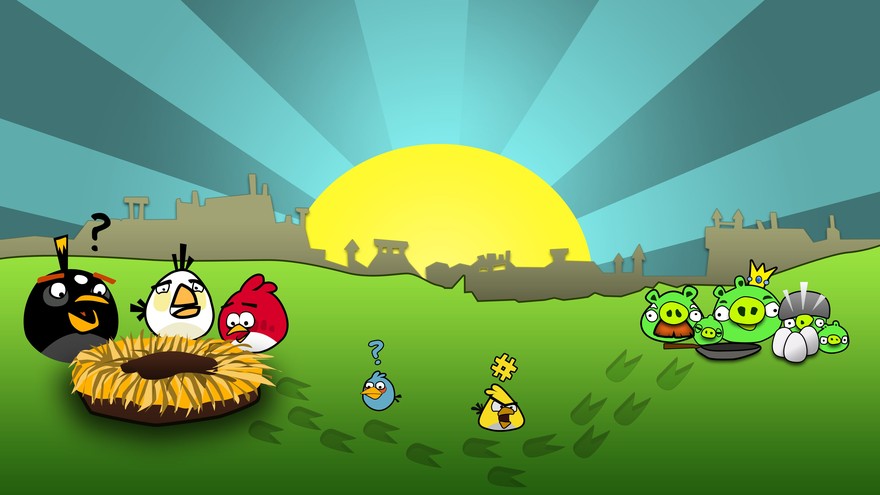This article is part of a collaboration with iQ by Intel.
Tracking down a Finnish mobile game designer in the middle of summer is easier said than done. This is a bit surprising, since Helsinki is a hotbed for mobile game development. The coastal Scandinavian metropolis is home to simply the biggest names on app stores. These are giant, world-conquering studios like the Angry Birds maker Rovio and Clash of Clans’ Supercell. Within walking distance from one another are around a hundred mobile gaming startups. However, most everyone is out of the office this time of year, and it has everything to do with the weather.
Because the boundaries of Finland begin in Helsinki on the Baltic Sea and stretch north into Arctic regions, daylight behaves curiously. In the days and weeks surrounding summer solstice, the sun doggedly refused to go down. Rather, it catnaps on the horizon, casting elongated de Chirico shadows. For many Finnish, this means basking in the endless days of summer while the still can. “All the time you’re thinking, ‘I must do something, because soon there is darkness,’” says Johannes Vuorinen, the young coder turned entrepreneur whom I was lucky to catch up with between trips to his countryside cottage. “People are trying to absorb every beam of sunlight so they can cope with the wintertime again.”

Helsinki in winter is the perfect destination for vampires, or programmers. One theory you’ll hear kicked around as to why the region excels at all-things-computer science is that it’s too inhospitable and lightless to venture outdoors four months out of the year. “You have nothing else to do but stay in front of your computer,” Vuorinen tells me. Badland, the first game from his studio Frogmind, is a prime example of the country’s mobile mastery. It has been successful beyond anyone’s wildest expectations, racking up over 10 million players, and winning Apple’s Design Award in 2013. But it also represents a literally darker aspect of Finland: namely, the extreme imbalance of natural lighting. You play as an odd-looking bird, flapping through silhouettes of rickety pipelines while dodging sharp objects, the afterglow of a midnight sun scrolling in the background.
But it’s not all magic in the moonlight. Finland’s past plays into the potency of Helsinki’s mobile gaming industry. The nation was to plastic portable telephones what today’s South Korea is to the smartphone—a nation so obsessed with the mobile device that it borders on an epidemic. Finland’s plastic portable craze started in 1982 with the arrival of the Mobira Senator, a primordial mobile device that came in a shiny leather briefcase and retailed for around $6000 dollars. The high price tag of early cellphones earned them the nickname of jupinalle, or yuppie teddy bears, but by the mid-’90s, everybody had one.
During the height of Finnish cellphone fever, the nation had the highest mobile adoption rate in the world. While American teenagers were still chatting on landlines, Vuorinen and his fellow junior high-schoolers were already well-versed in the art of text messaging, a technology which was brainstormed across the Baltic in Oslo. The tremendous popularity of mobile phones was due to the fact that Nokia—which in the 1860s was founded as a Gummitehdas, or rubber factory, in Nokia, Finland—had grown into the worldwide leader in mobile phone production. By the aughts the country was so saturated with spare batteries and phone chargers that mobile phone throwing became a sport. (The record currently stands at 102.68 meters.)
As you can imagine, the milieu of ringtones gave Finnish game developers a running head start at making games for cellphones. The dominance started with Snake, the yellow-and-monochrome time killer about steering a worm around its ever-lengthening body. That game appeared on approximately 350 million phones. By the early 2000s, a number of companies in Helsinki, such as Universomo and Mr. Goodliving, were already laying the groundwork for peeved canaries and marauders on smartphones. This predated the iPhone by a good decade, so how exactly to make money from mobile apps hadn’t been fleshed out yet. “The only way you could buy games was, like, reading an ad for them in a magazine. You needed to text message some number, and they would charge you $5 dollars and send you a download link,” says Vuorinen, who at the time was churning out 10 to 20 games a year. Not many of those games are remembered, but these were the formative years for the runaway successes of today.
But Vuorinen tells me it wasn’t just happenstance that the mobile phone industry boomed in Finland. It was also the bleakness of sub-10 to 20 degree winters, where snow tires are mandatory and people use special mood lamps that simulate sunlight to chase away depression. “In December, at Christmas, it’s all dark, at least up north. Helsinki has a little light. But when you go to work, it’s dark, and when you leave, it’s dark. You don’t see the sunlight at all,” Vuorinen says. This, he tells me, is a huge motivation to submerge yourself in details and forge ahead through the dismal months to the majestic Nordic summer. “I’m most productive during those days,” he says. “It’s dark. It’s cold. There’s nothing much to do. Why not just make a lot of code and games?”
